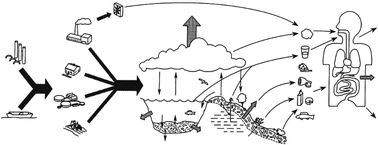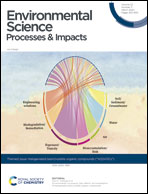A perspective on the role of fugacity and activity for evaluating the PBT properties of organic chemicals and providing a multi-media synoptic indicator of environmental contamination
Abstract
The hazard and risk from organic chemicals present in the environment are routinely evaluated using P (persistence), B (bioaccumulation) and T (toxicity) criteria. We present a perspective on how models based on the equilibrium criteria of fugacity and chemical activity can contribute to all three evaluations, thus providing a consistent and seamless assessment process. Persistence and its closely related, but fundamentally different property, chemical residence time can be determined from degradation half-lives (typically obtained from monitoring data) and multi-media mass balance models describing chemical fate and transport in real or evaluative environments. Bioaccumulation is driven by equilibrium partitioning processes that can be estimated from fugacity models treating uptake by respiration and diet in single organisms and in food webs, most commonly for aquatic systems for which confirmatory monitoring data can be obtained. Biomagnification is readily evaluated both experimentally and as a fugacity (or activity) increase from prey to predator. Toxicokinetic evaluations of chemical uptake and disposition in a variety of organisms, including humans, can be obtained using fugacity- and physiologically-based pharmacokinetic models. Toxicodynamic processes of chemical interactions with organisms leading to adverse toxic outcomes are less obviously amenable to fugacity assessment with the notable exception of baseline toxicity (narcosis), the most common mode of action of commercial chemicals. It is shown that a range of fugacities can be defined and correlated for specific species thus enabling direct comparison of fugacities estimated or monitored in the environment with fugacities resulting in baseline toxicity. Finally, it is shown that fugacity and activity can serve as multi-media metrics of chemical contamination in ecosystems, thus enabling identification of specific regions and species at greatest risk in a pictorial format that is readily understandable to scientific and regulatory communities and to the general public.

- This article is part of the themed collection: Halogenated (semi)volatile organic compounds (“X(S)VOCs”)


 Please wait while we load your content...
Please wait while we load your content...